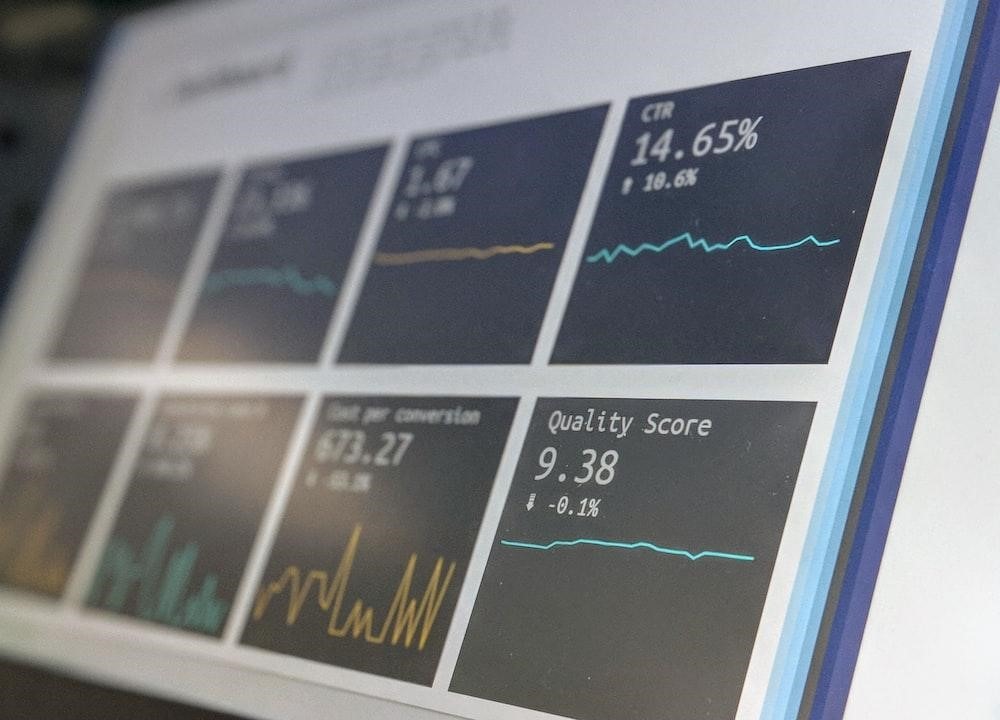Back in 2011, a little-known watch brand, Daniel Wellington, adopted an innovative marketing approach. Instead of relying on traditional advertising, the company sent free watches to a number of influential Instagram users. These influencers posted pictures of themselves sporting the watches, accompanied by a discount code for their followers.
The result? Within just two years, Daniel Wellington saw its revenue skyrocket from near zero to approximately $70 million in 2014 and over $220 million by 2016.
This is just one of the hundreds of examples you can find where brands found success collaborating with influencers and content creators. Today, influencer marketing services is not just a trend, but an integral part of a robust marketing strategy, bridging the gap between brands and consumers through authentic, personal engagement. Influencers, through their intimate connection with their audience, have the power to impact consumer behavior in ways traditional advertising just cannot.
Influencer marketing services can be a game-changer, allowing brands to tap into niche audiences and gain credibility through authentic recommendations. But how do you find that perfect influencer who aligns with your brand and can connect with your target audience? Let’s find out.
Influencer Marketing Services: Finding the Right Influencer Match
The first step towards identifying your ideal influencer is understanding your brand and its audience. This goes beyond the basic comprehension of your brand’s identity, values, and mission.
To find the right influencer you need to delve deep into your audience’s behaviors, inclinations, and preferences.
Visualize your brand as an entity with its unique persona and ask yourself:
- If your brand were a person, what characteristics would define it?
- What are the core values that your brand stands for and how do they manifest in its actions?
- How does your brand voice its mission, express its purpose, and interact with its audience?
The answers to these questions will help you shape your brand’s persona, which forms the foundation of all your marketing initiatives, including influencer marketing.
Grasping your audience’s dynamics requires understanding more than just their demographic details. It calls for a deeper exploration of their interests, aspirations, challenges, and digital behaviors.
Consider the following questions:
- What are your audience’s unique interests or hobbies that resonate with your brand’s products or services?
- What principles or values do they hold that align with your brand’s mission?
- What challenges do they face that your brand could help address?
- Which social media platforms does your audience use most, and what type of content engages them there?
With your distinctive brand persona and a nuanced audience persona in place, you’re well-prepared to scout for influencers who reflect both. The perfect match can elevate your brand’s reach, boosting awareness, credibility, and sales. Conversely, a mismatched influencer can lead to unsuccessful campaigns, wasted resources, and potential harm to your brand’s reputation.
When finding your ideal influencer, consider these crucial criteria.
Relevance: Aligning with Your Brand’s Message
The first step in identifying the right influencer is to look for relevance. The influencer’s content should align with your brand message. This is critical, as a study found that consumers trust influencers almost as much as their friends. But, how can you gauge this relevance?
Ask yourself the following:
- Does the influencer’s content style, topics, and values align with your brand’s message?
- Have they collaborated with similar brands in your industry?
- How do their content and messaging complement your brand’s image and tone?
Reach: Considering Follower Count and Engagement
Reach refers to the number of people you can potentially communicate with through the influencer’s follower base. However, remember that a high follower count does not always equate to a successful influencer marketing campaign. As you consider an influencer’s reach, consider answering these questions:
- Does the influencer’s follower count and engagement rate align with your brand’s marketing goals?
- Where is the influencer’s audience located, and does this match your target market?
- What age group does the influencer primarily reach, and is this group part of your target audience?
Resonance: Evaluating the Level of Engagement
Resonance refers to the level of engagement that the influencer can create with their audience. Engagement can be measured through likes, comments, shares, and the overall quality of interactions. But, how can you truly understand this resonance?
Consider these questions:
- Does the influencer consistently achieve a good level of engagement with their audience?
- What is the quality of the interactions on the influencer’s posts? Are followers actively participating in discussions or just passively liking posts?
- How do the influencer’s followers respond to promotional content?
Authenticity: Assessing Genuine Affinity for Your Brand
In an age where consumers are becoming increasingly sceptical of advertising, authenticity has never been more important. An influencer who has a genuine affinity for your brand and can integrate your products or services seamlessly into their content will come across as more trustworthy to their followers.
To evaluate authenticity, ask:
- Does the influencer have a genuine connection with your brand, and can they authentically promote your products or services?
- How transparent is the influencer about sponsored content and partnerships?
- Can the influencer provide testimonials or examples of past successful partnerships?
- How do the influencer’s past partnerships reflect their reputation and integrity in promoting products?
Answering these questions can guide you in identifying influencers who resonate with your brand, share its values, and appeal to your target audience. This delicate process is a careful balance of strategic analysis and creative thinking.
If you’re still uncertain about whom to collaborate with or require more guidance, consider reaching out to a marketing agency specializing in influencer marketing services. They can provide the expertise, resources, and network to help you find the perfect match and optimize your campaign’s success.

Collaborating with Influencers: Best Practices
Successful influencer marketing is built on strong, mutually beneficial relationships between brands and influencers. Once you’ve found the right influencer for your brand and set clear objectives for your campaign, the following best practices can help ensure an effective collaboration:
Clear Communication
Right from the beginning, communicate your expectations clearly. Make sure the influencer understands your brand, the campaign’s goals, and their role in achieving them. Providing a brief that outlines key messaging, deliverables, deadlines, and any specific requirements can be helpful.
Creative Freedom
While it’s important to convey your brand message consistently, remember that influencers know their audience best. Grant them creative freedom to present your brand in a way that will resonate most with their followers.
Long-Term Partnerships
Building long-term relationships with influencers can be more beneficial than one-off collaborations. An influencer who repeatedly promotes your brand will likely appear more authentic to their audience. Over time, this can lead to increased trust and better results for your brand.
Regular Check-Ins
Maintain regular communication with the influencer throughout the campaign. This allows you to provide feedback, address any issues promptly, and adapt the campaign if necessary.
Influencer Compensation
Fairly compensating influencers is not just ethical—it also fosters a better working relationship. Compensation could be monetary or in the form of free products, services, or experiences, depending on your agreement.
Remember, each influencer-brand relationship is unique. What works best for one partnership may not work for another. Flexibility and open communication are key to navigating these relationships successfully.
Emerging Trends in Influencer Marketing
As the digital landscape evolves, so does influencer marketing. Here are a few emerging trends that brands need to watch out for:
Rise of Micro and Nano Influencers
These influencers, who have smaller but highly engaged audiences, often boast higher trust levels and better engagement rates than their counterparts with millions of followers.
Influencer Collaborations and Partnerships
Instead of one-off promotional posts, brands are moving towards long-term collaborations and partnerships with influencers.
Video Content is King
With the rise of platforms like TikTok and features like Instagram Reels, video content is becoming the preferred format for influencer marketing.
Influence Beyond Social-Media
Influencers are extending their reach beyond social media, including podcasts, books, and even their own product lines.
Authenticity and Transparency
As consumers become more aware, they demand authenticity and transparency from brands and influencers alike. Hence, genuine and transparent influencer partnerships are gaining importance.

Measuring Influencer Marketing Success
Once you’ve found an influencer who aligns with your brand, reaches your target audience, resonates with their followers, and authentically promotes your products or services, the next step is to measure the success of your influencer marketing campaign.
Monitoring and evaluating the performance of your influencer marketing efforts is crucial for understanding its effectiveness and return on investment (ROI). It’s also important for identifying areas of improvement, which can be used to optimize future campaigns.
Here are some key performance indicators (KPIs) that can help measure the success of your influencer marketing services campaign:
Engagement: Engagement is one of the primary KPIs for influencer marketing. This includes likes, comments, shares, saves, and views. A high engagement rate indicates that the influencer’s content is resonating with their audience.
Reach and Impressions: Reach refers to the number of unique users who have seen the influencer’s post, while impressions measure the total number of times the post has been seen. These metrics can help determine the overall visibility of your campaign.
Follower Growth: If one of your goals is to increase brand awareness, you may want to track the growth of your brand’s social media following during the influencer campaign.
Website Traffic: You can use tools like Google Analytics to track if there’s an increase in website traffic or specific actions taken on your website as a result of the influencer marketing campaign.
Sales and Conversion Rates: With the use of unique discount codes or tracking links, you can track direct sales from the influencer’s posts. This gives a clear picture of the campaign’s impact on your bottom line.
Key Takeaways
Influencer marketing has undoubtedly transformed the digital marketing sphere, offering unlimited potential to shape consumer behavior and purchasing decisions. Unlike traditional advertising, collaborating with social media influencers helps you personalize and humanize your brand leading to engagement, connection and increased ROI.
Teaming up with social media influencers, you’re not just promoting a product or service; you’re curating a narrative that resonates deeply with their engaged audience. This is all because influencers aren’t just promoting—they’re connecting. Their diverse backgrounds and experiences allow them to create content that stirs conversations and ignites trends, effectively turning the spotlight on your brand, increasing its visibility and propelling your sales to new heights.
Success in influencer marketing, however, isn’t just about finding the most popular influencer. It’s about finding the right influencer—someone who aligns with your brand’s values, understands your target audience, and has the creativity and authenticity to communicate your brand message in a way that truly resonates.
This is a process, and just like any other, it requires flexibility and a willingness to learn. You’re not going to hit a homerun on the first pitch. It’s a game of fine-tuning your approach, understanding your audience better with each campaign, and adapting to the ever-evolving social media landscape. And remember, there’s no failure here—only opportunities to learn and improve.
The beauty of it is, when you do find that perfect influencer match, the rewards are immense. They can take your brand to new heights, form deeper connections with your target audience, and deliver impactful messages that echo far beyond a single post or campaign. With the right influencer, your brand’s voice can resonate in ways traditional marketing strategies can only dream of.



